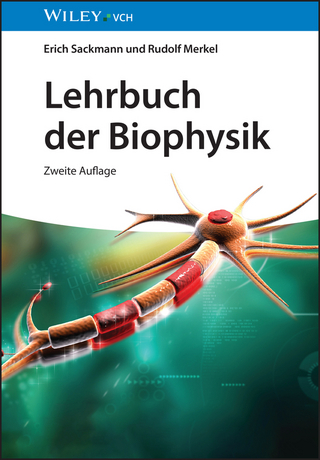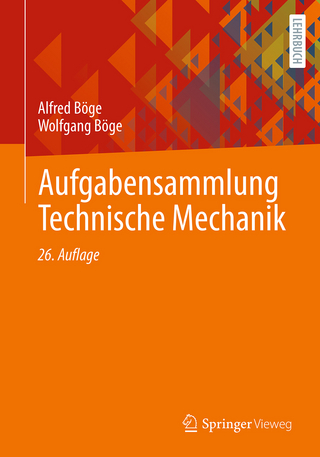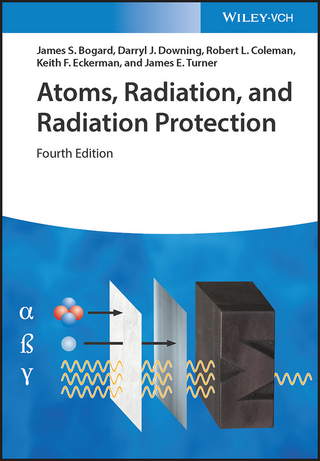
Electron Gun for Gyrotrons
Springer Verlag, Singapore
978-981-19-4609-7 (ISBN)
- Titel wird leider nicht erscheinen
- Artikel merken
This book highlights the emission, transmission, and launching of an electron beam. It presents an overview and recent advances in order to enhance knowledge in the field of gyrotron in general and electron gun in particular. The book is presented in seven chapters starting with the introduction and ending with future possible directions in the field of electron beams and gyrotrons.
Dr. Udaybir Singh received his Ph.D. in physics from Gurukul Kangri University, Haridwar, India, in 2012. He worked in the field of Microwave Tube Area for 10 years at CSIR- Central Electronics Engineering Research Institute (CEERI), Pilani, India. Currently he is working in the field of Photonics and ubiquitous analytical techniques at CSIR- Central Scientific Instruments Organization (CSIO), Chandigarh. He has published more the 100 research papers in in peer-reviewed journals and conference proceedings. Prof. A. K. Sinha received his Ph.D. degree from Ranchi University, India, in 1986. He has authored or coauthored more than 200 research papers in peer-reviewed journals and conference proceedings. His major fields of research include megawatt tubes, megawatt applications, and mathematical modeling in general and TWT and gyrodevices.
CHAPTER 1
INTRODUCTION
1.1
General introduction
1.2
Introduction to Gyrotron
1.1.1 Applications
1.3
Introduction to Magnetron Injection Gun (MIG)
CHAPTER 2
MOTION OF ELECTRON BEAM IN GYROTRON
2.1
Introduction
2.2
Electron beam Generation
2.2.1 Thermionic Cathodes
2.2.2 Functioning of Thermionic Cathodes
2.2.3 Thermionic Cathode material
2.2.4 Operating mechanism
2.3
Electron beam Propagation
2.4
Electron beam Compression
2.5
Electron beam Interaction
2.6
Electron beam Collection
CHAPTER 3
ELECTRICAL DESIGN OF MIG
3.1
Introduction
3.2
Preliminary design
3.3
Design constraints
3.4
Electrical Design
3.4.1 Geometry creation
3.4.2 Design goals
3.4.3 Electron beam analysis
3.4.4 Output Parameters tuning
3.4.5 Parametric study
3.5
Design of MIGs with different geometrical configurations
3.5.1 Double beam MIG
3.5.2 Tunable MIG
3.5.3 Co-axial MIG
3.5.4 Inverse MIG
Appendix A3.1: Study MIG Design Equations
CHAPTER 4
THERMAL AND HIGH VOLTAGE BREAKDOWN STUDY
4.1
Introduction
4.2
Introduction to Thermal Analysis
4.3
Thermal Analysis of MIG
4.3.1 Cathode heater Temperature realization
4.3.2 Anode Temperature realization
4.3.3 Study of Structural deformation
4.4
Introduction to high voltage Analysis
4.5
high voltage Breakdown
4.6
Electric breakdown in MIG
4.6.1 Electric breakdown in air
4.6.2 Electric breakdown in vacuum
4.6.3 Electric breakdown in insulator
4.7
High voltage breakdown study of MIG
4.8
conclusion
CHAPTER 5
MECHANICAL AND OPERATIONAL DESIGN OF MIG
5.1
Introduction
5.2
Material selection and engineering drawings
5.3
Fabrication of MIG
5.4
Material selection and Engineering design
5.5
Fabrication of MIG
5.6
Vacuum operation
5.7
MIG testing
5.7.1 Cold testing
5.7.2 Hot Testing
CHAPTER 6
MIG DESIGN EXAMPLES
6.1
General Introduction
6.2
MIG design for different applications
6.2.1 Low power MIG design
6.2.2 Double beam MIG design
6.2.3 High power MIG design
6.2.4 Magnetically tunable MIG design
6.2.5 MIG design at THz frequency
6.2.6 Co-axial MIG design
6.2.7 Inverse MIG design
6.3
Conclusion
CHAPTER 7
CONCLUDING REMARKS
`
REFERENCES
| Erscheint lt. Verlag | 11.9.2022 |
|---|---|
| Reihe/Serie | SpringerBriefs in Applied Sciences and Technology |
| Zusatzinfo | 44 Illustrations, color; 17 Illustrations, black and white; IX, 127 p. 61 illus., 44 illus. in color. |
| Verlagsort | Singapore |
| Sprache | englisch |
| Maße | 155 x 235 mm |
| Themenwelt | Naturwissenschaften ► Physik / Astronomie ► Angewandte Physik |
| Naturwissenschaften ► Physik / Astronomie ► Hochenergiephysik / Teilchenphysik | |
| Naturwissenschaften ► Physik / Astronomie ► Plasmaphysik | |
| ISBN-10 | 981-19-4609-4 / 9811946094 |
| ISBN-13 | 978-981-19-4609-7 / 9789811946097 |
| Zustand | Neuware |
| Haben Sie eine Frage zum Produkt? |
aus dem Bereich


